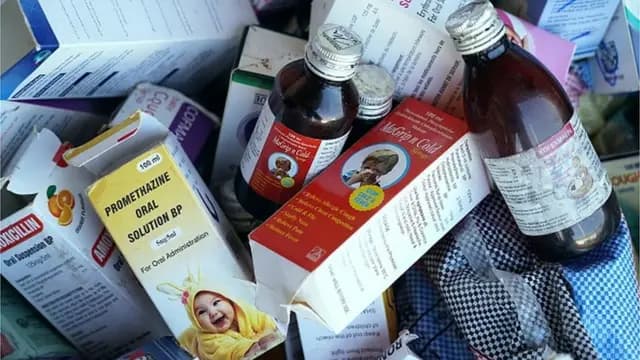Loading News Article...
We're loading the full news article for you. This includes the article content, images, author information, and related articles.
We're loading the full news article for you. This includes the article content, images, author information, and related articles.
A recent surge in child deaths in India linked to tainted cough syrup containing a toxic chemical has raised critical questions about Kenya's reliance on pharmaceutical imports, predominantly from India, and the robustness of local drug regulation.

At least 20 children in India's Madhya Pradesh state have died since late August 2025, with five others undergoing treatment for kidney failure, after consuming a contaminated cough syrup. The cough syrup, identified as 'Coldrif' manufactured by Sresan Pharma in Tamil Nadu, was found to contain diethylene glycol (DEG) exceeding permissible limits. DEG is an industrial solvent that can be fatal even in small amounts if ingested.
This tragic development in India, a major source of Kenya's pharmaceutical imports, underscores the urgent need for stringent quality control and regulatory oversight within Kenya's own healthcare system. Kenya imports approximately 80 percent of its pharmaceutical products, with India being the primary supplier. In 2023, Kenya's pharmaceutical imports from India amounted to an estimated $281 million.
Kenya's pharmaceutical sector is regulated by the Pharmacy and Poisons Board (PPB), established under the Pharmacy and Poisons Act, Chapter 244 of the Laws of Kenya. The PPB is mandated to regulate the practice of pharmacy and the manufacture and trade in drugs and poisons, including product evaluation, registration, and post-market surveillance.
Despite these regulations, concerns persist regarding the effectiveness of quality control. While laws exist for sampling imported products for testing and inspecting them at ports of entry, the National Quality Control Laboratory is believed to test less than 20% of samples. This raises questions about the potential entry of substandard or falsified medicines into the Kenyan market, mirroring the issues seen in India.
Recently, on Sunday, October 5, 2025, the PPB dismissed reports of an impending drug shortage in Kenya, clarifying that a routine renewal of marketing authorizations for pharmaceutical products is underway. This process, conducted every five years, aims to ensure all medicines in circulation comply with updated safety and quality benchmarks. Market authorization holders are required to renew their product registrations by Tuesday, December 31, 2025.
The Health Cabinet Secretary, Susan Nakhumicha, has previously highlighted Kenya's struggle to reduce its heavy reliance on imported medicines. In February 2024, she noted that less than 20 percent of pharmaceutical products consumed in Kenya are manufactured locally. Nakhumicha has urged the Kenya Medical Supplies Authority (KEMSA) to prioritise locally manufactured products, importing only when a product is not available domestically.
KEMSA, a state corporation under the Ministry of Health, is responsible for procuring, warehousing, and distributing health products and technologies for public health programs. The push for local manufacturing aims to ringfence approximately $550 million spent annually on pharmaceutical imports.
The current situation in India serves as a stark reminder of the global challenges in medicine supply chains and the critical importance of robust national regulatory systems to protect public health. The World Health Organization (WHO) has linked cough syrups contaminated with diethylene glycol and ethylene glycol to over 300 child deaths worldwide since 2022.
While the PPB has assured Kenyans of a stable medicine supply, the recent events in India necessitate a thorough review of Kenya's import verification processes for pharmaceuticals, particularly those from high-risk origins. Key questions remain:
The ongoing renewal of marketing authorizations by the PPB presents an opportunity to reinforce quality standards and ensure that only safe and effective medicines are available in Kenya. Stakeholders will be closely watching for increased transparency and stricter enforcement of regulations.
The public and healthcare professionals will be keenly observing the PPB's actions following the December 31, 2025, deadline for product registration renewals. Further scrutiny on KEMSA's procurement practices and the government's commitment to bolstering local pharmaceutical manufacturing will also be critical in safeguarding Kenya's public health against future threats from contaminated medicines.